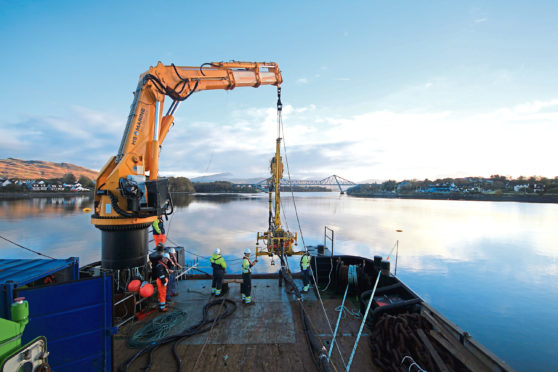New anchoring technology being developed by a consortium of engineering experts across Scotland, including Dundee University, is set enhance the sustainability of the aquaculture sector.
The system could boost the environmental impact of the industry and support ambitions of achieving long-term sustainable growth.
It could also significantly support the aquaculture industry in finding ways to anchor farms in new locations.
In Scotland aquaculture includes farming Atlantic salmon, trout and halibut, along with blue mussels oysters and scallop, although a small number of seaweed cultivation sites have also recently been established.
While concrete or steel anchors are suitable for existing sites, the technology will enhance the options available for high-energy locations, as well as those further from the shore, with solid rock on the seabed.
Focussed on reducing the cost, weight, and environmental impact of anchoring, the new approach will use much lighter anchors which form a mechanical ground lock without the need for resin or grout.
The reduction in weight also allows operators to use more modestly-sized, readily available vessels for deployment.
Michael Brown, reader at the University of Dundee’s Geotechnical Engineering Research Group, said: “This type of anchor technology allows deployment in more energetic environments and in deeper water with increased confidence.
“The challenge from an engineering perspective is to develop an anchor that is efficient, easy to design and works in variety of rock types and rock mass conditions.”
The consortium is Sustainable Marine Energy Ltd, Dundee University, Gael Force Group and the Scottish Aquaculture Innovation Centre.
jimillar@thecourier.co.uk
“While it is easy to design a heavy and expensive rock anchor that works well in all scenarios, we need to refine the anchoring system specifically for aquaculture application.
Adoption of the technology would allow fish and shellfish farms to look at areas which are currently unsuitable for use. Locating operations in deeper, higher energy waters could potentially help to reduce gill health issues among fish, the spreading of sea lice, and disease risk. It could also lead to an increase in the industry’s capacity, by allowing the development of larger farms.
Across Europe, aquaculture accounts for about 20% of fish production and directly employs some 85, 000 people, and the sector is mainly composed of SMEs or micro-enterprises in coastal and rural areas.
The consortium consists of Sustainable Marine Energy Ltd, Dundee University, Gael Force Group and the Scottish Aquaculture Innovation Centre.





